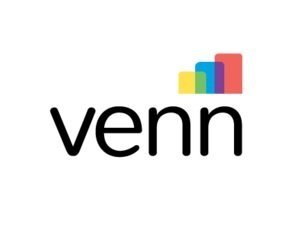Written by: Jonathan Dunnett
At all stages of growth, partnerships can be the lifeblood for your company. They can give you access to new geographic markets, new verticals, new customers and other paradigm-shifting drivers.
Problem is, done poorly, partnerships can make you feel like this:
So, how can you as a growing company begin to nail down what you need? A few thoughts to consider:
Are you aligned on process and goals?
We will sometimes hear from clients, “I just want a partner to take that.” Often, this is in situations where the company may be looking for sales channel partners, but, as with every choice, it has consequences (both good and bad). What I’ve seen happen before is that companies can lose control of what matters (e.g. messaging and the customer relationship), and that can be disastrous. Before choosing a partner, you need to walk through scenarios and do a pre-mortem: if we do X, what could happen, and how would we respond? Also, what are the bi-products of that scenario and that series of choices?
When you make a choice like outsourcing a part (or all) of your sales, realizing that you may miss out on amazing insights from the customers is important. It may also be like the example below, where there is complete misalignment on desired business outcomes:
A tale of two partnerships.
— Kristen Anderson (@CatchKristen) December 28, 2020
Company A and Company B are similar-sized competitors. Very different approaches to the same market. Company A is tech-centric. Company B is sales-centric.
Both piloted partnerships with us in 2020.
Should we talk about some results?
As you can see from the Twitter thread, in one case, the companies had very clear alignment on processes and goals. That partnership went very well for Catch Benefits. The other… well…
Our learnings?
— Kristen Anderson (@CatchKristen) December 28, 2020
We will never allow another partner to pilot with us if their approach is like Company B. No matter how large they are.
- Need product buy in from day 1
- Need revenue split to be fair
- Need alignment on outcomes before legal terms
- Need to value people time
If you’re starting to hyperventilate, take some consolation in that even big players don’t always get it right.
Recently, Amazon, JPMorgan Chase and Berkshire Hathaway announced they are scuttling Haven, the once highly-touted joint venture that was going to turn healthcare on its head.
A recent CNBC report detailed some of the post-mortem:
One key issue facing Haven was that each of the three founding companies executed their own projects separately with their own employees, obviating the need for the joint venture to begin with, according to the people, who declined to be identified when speaking about the matter.
Now, as you can well imagine, trying to get alignment from the get-go with three large organizations would be challenging, to say the least. It seems like, from their case, as well as Kristen’s above, more in-depth pre-work and/or due diligence may have gone a long way.
What does the other side of the table bring?
This is a really important consideration. In this piece, we provided some great resources under “Who is the right partner?”, and, as you’ve seen above from Kristen’s example, there is a big behavioural and cultural element that comes into play.
For your peace of mind, sketch out in detail ahead of time the right characteristics that you need in a partnership: plan for success ahead of time. What does the ideal partner look like for you? Think about factors like:
Their ability to dedicate human resources and the requirement on your human resources. Weigh this versus the expected upside from this partnership.
Are they ethical? Do they have a history of bad behaviour?
Are your cultures aligned?
Are they truly what they say they are? Are they credible in their claims?
What don’t you know about them that you should? Is partnership with them going to be a quicksand pit you can’t escape?
Who is the best contact to work with in the organization?
Who do they have existing successful partnerships with in the marketplace?
These are just a few examples (I’m sure you can come up with many more), but you can see how you need to chart your ideal candidate (much likes sales or hiring!) in advance.
Using techniques like profiling, and talking to people you trust that can give you insight on these potential partners will be key. This could be governmental agencies, industry associations, former employees, or other people that will be able to speak to specifics of this potential partner for you.
What if you’re getting acquired or doing the acquiring?
Closer to home, the recent acquisition of NL-based Verafin (which was started at Genesis in 2003) was not a quick acquisition. As Co-Founder Brendan Brothers recently related in a CBC interview (starts around 30:00), the company was approached a number of times about acquisition, even by NASDAQ. “It wasn’t a decision taken lightly”, said Brothers.
NASDAQ came back in the fall of 2020 not just with a compelling offer, but with a “compelling story” on how the businesses could work together: clearly, they had done their homework. Culture, values, vision were all well aligned and that helped smooth the offer to be acquired, with both Verafin and NASDAQ seeing a great mutual path forward.
The good news
The truth is, in the case of Kristen (above), and others, like Hulu (NBCUniversal and Walt Disney), Fiserv (with First Data), Dow (with Corning) and many others, finding the “right fit” partners can be accomplished.
That doesn’t mean it doesn’t take time, and that doesn’t mean it will be easy: but, done well, partnerships can be a great catalyst for growth.



